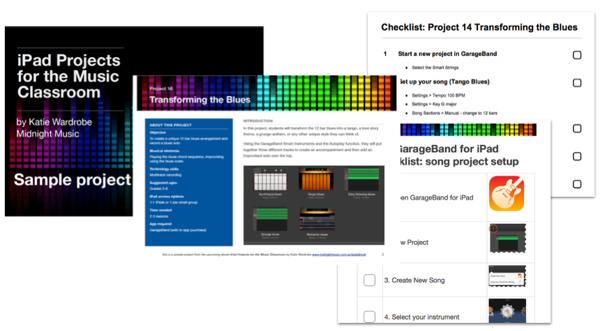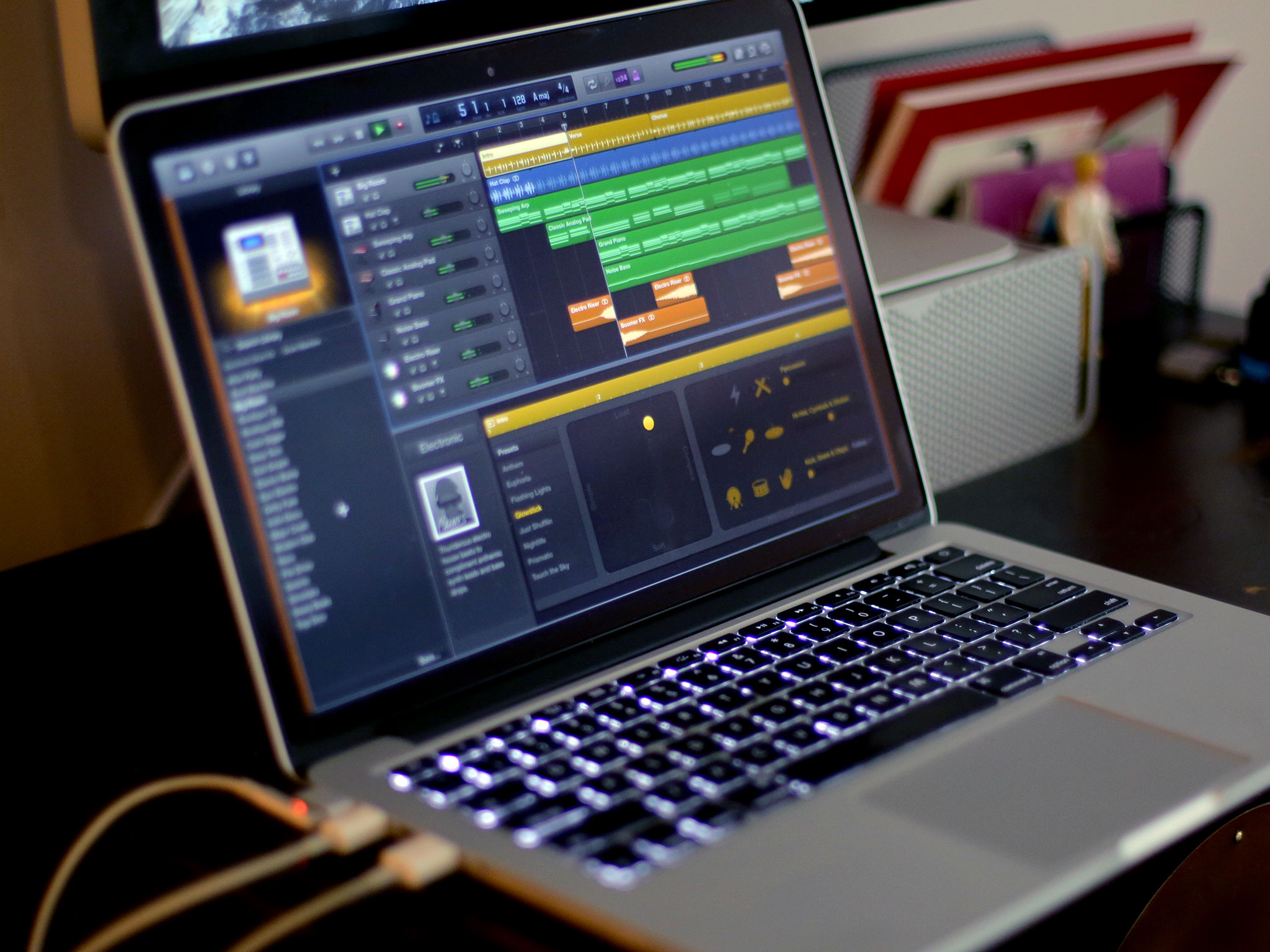New ‘iPads in the Music Classroom’ Video: A 12-Bar Blues in Thumbjam Innovation, iPads, Teacher Training, Teaching Music with GarageBand for iPad Textbook, Tutorial Video Nationwide ‘iPad Composition’ Training Courses in November iPads, Teacher Training, Teaching Music with GarageBand for iPad Textbook. GarageBand ’11, part of Apple’s iLife suite, is a versatile application.With it, you can create musical scores by stringing together audio loops, play and record virtual instruments, record.
GarageBand was recently released for iPad. It costs three quid in the UK (five dollars in the US), and brings some of the desktop recording studio to Apple’s tablet. In typical Apple style, it ramps up the shiny shiny and it makes creativity (of sorts) very easy, thereby blinding variouspublications into giving it their highest rating.

Or does it?
OR DOES IT? (Etc.)

I’m a bit of a GarageBand for Mac fan-boy, and I’ve been writing and recording songs since I was in my teens, which means for over a few years now (if ‘a few’ means ‘about 20’, which IT OBVIOUSLY DOES NOT AND MY HAIR ISN’T GOING GREY). I think it’s a great application that too many people dismiss as a toy. While on the surface, GarageBand is a case of dragging loops to make a ‘song’ and either 1) playing around and having fun or; 2) deluding yourself into thinking you’re going to get a number-one hit single with Loopy Looping Loops, GarageBand has depth. You can record guitars and vocals, and you can capture live performances through software instruments, and then edit them to your heart’s content. I’m not going to pretend that GarageBand is Logic, nor even Logic Express, but it’s a perfectly good Logic Express Express, and I know several bands who’ve used the application for everything but mastering, so it’s clearly capable.
This absolutely isn’t the case with GarageBand for iPad, which is, in its current incarnation, too often a toy. Now, there’s nothing whatsoever wrong with this, and I’ve a feeling it’s going to go down extremely well with many people. The app looks great, mostly (although not always) works very nicely, and enables you to make a nice noise without much effort, just like the Mac version. The problem for me is that GarageBand for iPad then slams on the brakes and screeches to a halt. Surprised musicians in the passenger seat are left there with whiplash, saying “hang on a bit—can’t we go any further?”, but Apple merely opens the door and tells them to bugger off, leaving them stranded at a sign pointing to NanoStudioville and BeatMaker Town. What’s interesting, though, is that it would take relatively little effort to turn the application into a tool with enough depth to appeal to and be useful for a much wider audience.
In interface and usability terms (at least for relative newcomers), GarageBand gets almost everything right. On creating a new song, you then get to choose between a number of instrument types: keyboard, drums, live guitar and microphone. There’s also a sampler (record a sound and play it using the keyboard) and four ‘smart’ instruments (drums, bass, guitar, keyboard), which are effectively a means of creating your own auto-accompanyment, by dragging drums to a grid or prodding chord markers to make guitars strum. (If you’ve ever seen the now comically overpriced Band for iPhone, the smart instruments are similar to its ‘funky drummer’ and ’12 bar blues’ sections, but much nicer and far more flexible.)
The smart instruments are undoubtedly where most users will first head, and in combination with Apple’s (slightly small) selection of built-in loops, it’s pretty easy to create an eight-bar mini-song. It’s very unlikely you’ll feel ripped off, since the product is a lot of fun, and it’s also an app that showcases precisely why Apple believes the ten-inch screen is optimal for a tablet—many of GarageBand’s elements would be fiddly at best on the likes of a Galaxy Tab.
It’s when you start wanting to create something a bit more customised, a bit more you, that GarageBand for iPad’s limitations become clearer. One of the most evident is the amount of time it takes to audition instruments, and this can’t be done live while a song plays (unlike in NanoStudio), meaning it takes a while to work your way through instruments. Most of the other shortcomings centre around editing. Fire up a software instrument and you can play a virtual keyboard to enter song data into the iPad. Usefully, you can overdub, in order to get more complex tunes down with less effort, or to work up drum patterns. What you then can’t do is make any changes to your performance. At most, you can crop and copy audio regions and correct dodgy timing by assigning quantising to a track. But you can’t double-tap on an audio region and then edit the underlying MIDI data—for that, you must export your track to GarageBand for Mac, although you cannot then transfer it back to the iPad. The lack of pattern and note editing also makes it impossible to ‘rescue’ manual drum tracks. Apple has made a lot of the iPad’s accelerometer being used to define instrument expression—in other words, hit a virtual instrument harder and it plays louder. In practice, this feature simply isn’t accurate nor consistent—at least on an iPad 1—meaning it’s best disabled. Cleverly, Apple doesn’t enable you to disable the accelerometer when working with drum instruments, meaning you end up with drum tracks that are all over the place and you don’t have any way of correcting them later. Bizarrely, it’s also not possible to delete or rearrange tracks in the track viewer—at most, you can assign a new instrument to a track.(@daveinthecloud notes on Twitter you tap a selected track’s instrument icon to access Delete and can tag-drag to rearrange. I therefore suggest that this isn’t optimal and that Apple should state these controls are available when you tap the (?) icon.)
Slamming my own brakes on, it’s worth remembering that this is GarageBand for iPad 1.0. This is not a mature app, but Apple’s next attempt to figure out what it’s tablet’s good for. As Marco Arment says in Moving on from iPad ‘office productivity’ apps, the tablet’s proven sub-optimal for office-oriented productivity, and so GarageBand and iMovie could be the company testing the water, to see how its device fares for casual media creation. Certainly, while a lot of thought’s (rightly) gone into the virtual instrument interfaces, the track interface feels half-baked, like Apple simply didn’t have time to think things through. And given that both NanoStudio and BeatMaker offer superior editing to GarageBand—and on the smaller screen of the iPhone—I remain hopeful that GarageBand will follow suit. Even then, I think it’s unlikely I’d use it for full songs, but it would be an obvious choice to kick things off with, due to its compatibility with the desktop version. It’s also worth noting that if you’re a guitarist, GarageBand for iPad’s toolset will cause you fewer problems, since it’s fine for recording live audio and making basic crops and copies. (The set of amps and stomp-boxes is also excellent, especially for a product that’s so inexpensive.) You’ll likely have to make do with loops or smart drums for drumbeats, but otherwise you may find this the best app you’ve ever bought.

Garageband Ipad 12 Bar Blues Studio

12 Bar Blues Chords
For others, though, GarageBand for iPad is in the main what many people inaccurately call its desktop cousin: a toy. Make no mistake: it’s a great toy, one that is highly recommended and that is most definitely worth its low price-tag. What GarageBand for iPad currently struggles at is in being a tool for musicians (bar guitarists), but given that the app is currently selling like hot cakes, I can’t imagine things staying this way for long.